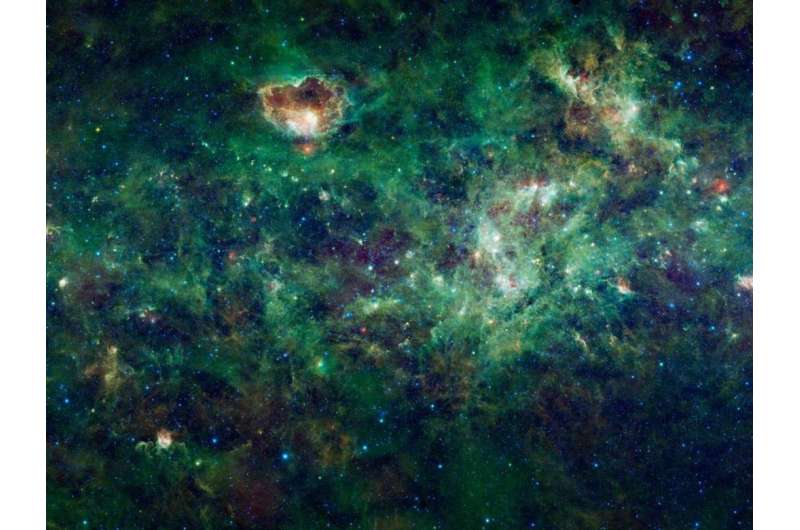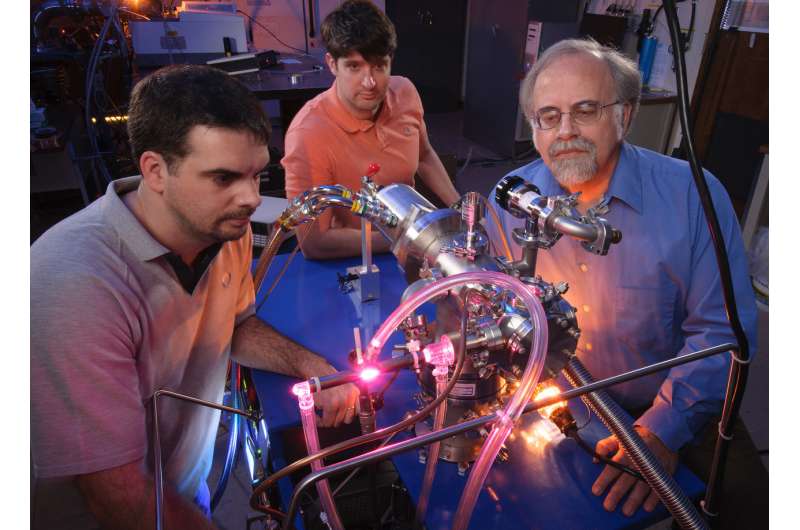December 19, 2018 report
Lab study adds credence to life arriving on Earth from asteroids theory

A team of researchers at NASA's Ames Research Center has found some evidence that adds credence to the theory that the basic ingredients for life came to Earth from asteroids. In their paper published in the journal Nature Communications, the group describes the experiments they carried out, what they found, and why they believe their work offers evidence of life arriving from elsewhere.
Despite a lot of effort, scientists still do not know how life started on planet Earth. They also do not know if it sprang out of existing ingredients or if those ingredients came from somewhere else, via asteroid or comet. There are two current leading theories. The first suggests that life began in a hot spring on land or in a deep-sea thermal vent, because the right mix of ingredients were there to allow it to happen. The other main theory suggests that the basic ingredients for life arrived on a comet or asteroid and things took off from there. In this new effort, the researchers have found some evidence that supports the latter theory.
One of the main ingredients of life is sugar—it provides energy. One kind of sugar, 2-deoxyribose, is the sugar component in DNA. In their lab, the researchers created space-like conditions and found they were sufficient for spontaneously creating 2-deoxyribose. More specifically, they put a sample of an aluminum substrate in a freezer, cooling it down to near absolute zero. They then placed it in a vacuum chamber. That allowed for simulating conditions in deep space. Next, the team piped in a water and methanol gas mixture, similar to that found in the interstellar medium. To simulate radiation from stars, they bathed the sample in UV light.
The researchers report that initially, ice built up on the sample, but it was melted by the UV light. The team found that a small amount of 2-deoxyribose had formed along with some other sugars. Intrigued by their findings, the researchers examined samples from several carbonaceous meteorites that have been found over the years and found evidence of alcohols and deoxysugar acids—not exactly 2-deoxyribose, but the researchers note that their sampling was small—it might be found on others.

The researchers suggest that their findings add yet more credence to the theory that the basic ingredients for life came to us from elsewhere, and only required the right conditions to make the jump from a cocktail of chemicals to living creatures.
More information: Michel Nuevo et al. Deoxyribose and deoxysugar derivatives from photoprocessed astrophysical ice analogues and comparison to meteorites, Nature Communications (2018). DOI: 10.1038/s41467-018-07693-x
Journal information: Nature Communications
© 2018 Science X Network





















